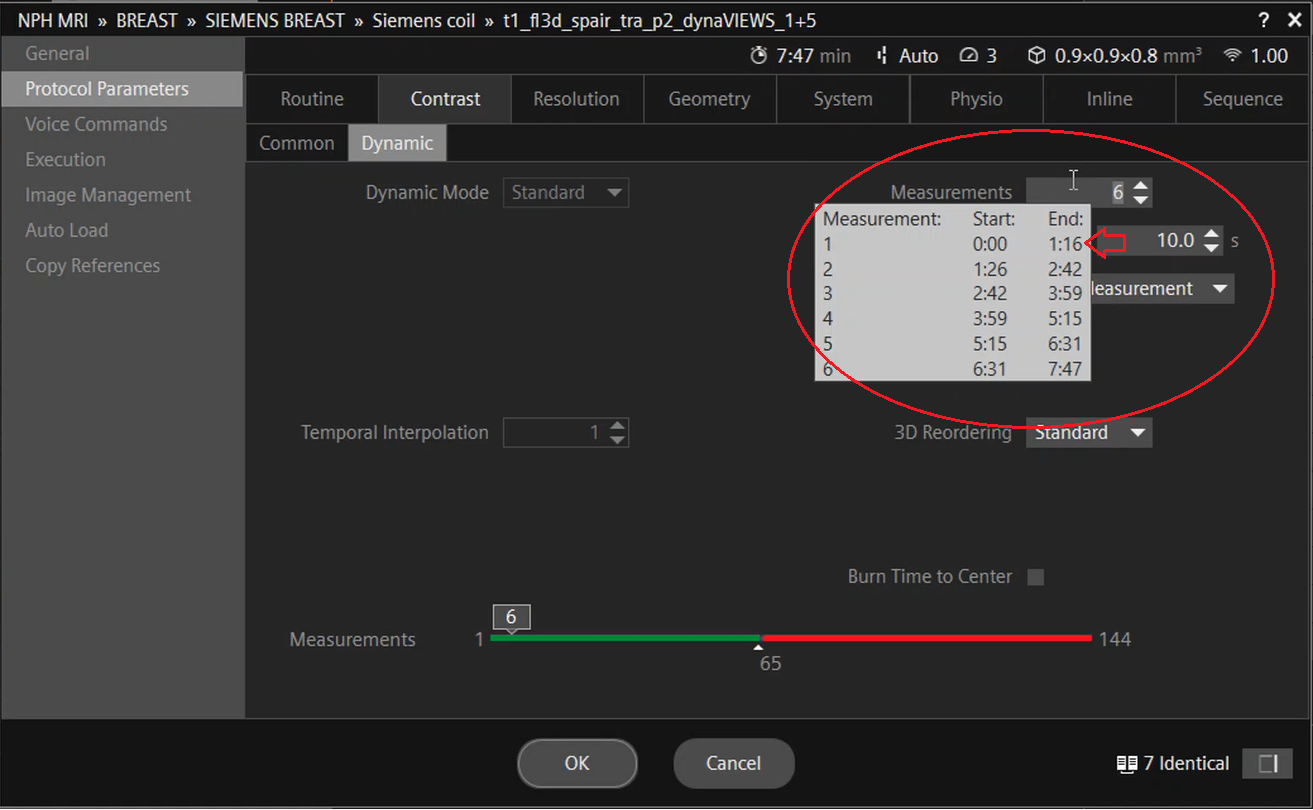Temporal Resolution
Temporal resolution in MRI refers to the ability of the imaging system to capture changes in the object being imaged over time. It indicates how quickly successive images can be acquired and is critical in dynamic studies where changes occur rapidly, such as in cardiac imaging, breast imaging, or any other dynamic contrast-enhanced imaging.
Note: Temporal resolution is not the same as spatial resolution of the image. It is simply the acquisition time of each measurement in a dynamic sequence.

Importance of Temporal Resolution
- Dynamic Imaging: High temporal resolution is crucial for imaging fast-moving structures or capturing rapid physiological changes.
- Breast Dynamic Imaging: Shorter temporal resolution helps in accurately capturing the contrast enhancement curves, crucial for differentiating between benign and malignant lesions.
- Prostate Dynamic Imaging: High temporal resolution allows for precise characterization of prostate lesions, improving the accuracy of detecting cancerous tissues.
- Liver Dynamic Imaging: In liver imaging, capturing rapid contrast uptake and washout is essential for identifying and characterizing focal liver lesions, such as hepatocellular carcinoma.
- Accurate Enhancement Curves: Shorter temporal resolution provides more data points on the enhancement curves, leading to more precise characterization of pathologies and improving diagnostic accuracy.
Factors Affecting Temporal Resolution
Repetition Time (TR):
- TR is the time between successive pulse sequences applied to the same slice. Shorter TR improves temporal resolution because it allows more images to be taken in a given period.
Number of Excitations (NEX):
- NEX, also known as Number of Signal Averages (NSA), refers to the number of times data is collected for the same phase-encoding step. Lower NEX improves temporal resolution by reducing the total scan time, but it may also reduce signal-to-noise ratio (SNR).
Partial Fourier:
- Using partial Fourier techniques can reduce the acquisition time by acquiring only a fraction of k-space data and reconstructing the full image. This improves temporal resolution but may impact image quality.
Parallel Imaging Techniques (e.g., iPAT):
- Techniques such as iPAT (integrated Parallel Acquisition Techniques) use multiple receiver coils to acquire data simultaneously, reducing the amount of time required to collect full k-space data and thus improving temporal resolution.
Spatial Resolution:
- There is a trade-off between spatial and temporal resolution. Increasing spatial resolution (smaller voxel size) requires more data acquisition, which can decrease temporal resolution.
iPAT with an acceleration factor of 3

Temporal resolution : 1.16 minutes

iPAT with an acceleration factor of 4

Temporal resolution : 1.02 minutes

References
- Backhaus, S. J., Metschies, G., Billing, M., Schmidt-Rimpler, J., Kowallick, J. T., Gertz, R. J., Lapinskas, T., Pieske-Kraigher, E., Pieske, B., Lotz, J., Bigalke, B., Kutty, S., Hasenfuß, G., Kelle, S., & Schuster, A. (2021). Defining the optimal temporal and spatial resolution for cardiovascular magnetic resonance imaging feature tracking. Journal of Cardiovascular Magnetic Resonance, 23, 60.
- Tsao, J. and Kozerke, S., 2012. MRI temporal acceleration techniques. Journal of Magnetic Resonance Imaging, [online] Available at: Wiley Online Library


